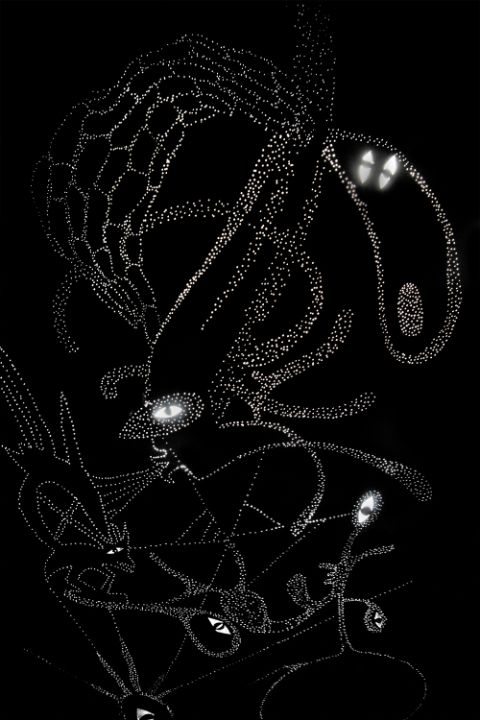Jasmine Thomas-Girvan

The Healing Stream (2020), detail. Photo: Nathan Patrick
Jasmine Thomas-Girvan is known for her aesthetic of assemblages which combine literary, oral, and performative practices with the visual. As Annalee Davis has stated, Thomas-Girvan ‘binds varied materials together, connects the logical, linear plane with the supernatural, and links the human interior space with exterior realities.’ The Healing Stream is an installation that unfolds like a scroll. Drawn on black paper, it centres Rastafari culture and pays homage to The Royal Parchment Scroll of Black Supremacy from 1926 by proto-Rastafarian preacher Fitz Balintine Pettersburg. The title The Healing Stream stems from a Jamaican folk song that urges: ‘Dip dem in the healing stream/ Dip dem deep, but not too deep/ Dip dem to cure bad feelings’, reminding the viewer that Black history engages with the power of healing through preached words, whether in song or in service. The Promised Key, on the other hand, is a small sculptural work that upholds the 1926 pamphlet under the same name published by Leonard Howell or the ‘first Rastafarian’ under his Hindu pen name G.G. Maragh. Preaching the history of redemption of Black people through space and time, Howell was later arrested for sedition and became a lifelong target of the colonial government for his activism.
Works in the exhibition: The Healing Stream (2022), installation, paper, graphite, acrylic, wood, L: 360 cm (Mrinalini Mukherjee Hall); The Promised Key (2023), 7.6 × 7.6 × 10.1 cm, installation, glass, sterling silver, paper (Beatriz Nascimento Hall); Babylon’s Fortune foretold…But what about us? (2022), installation, transparent film, wood, 22.6 × 29 × 7.5 cm (Beatriz Nascimento Hall). Courtesy of the artist